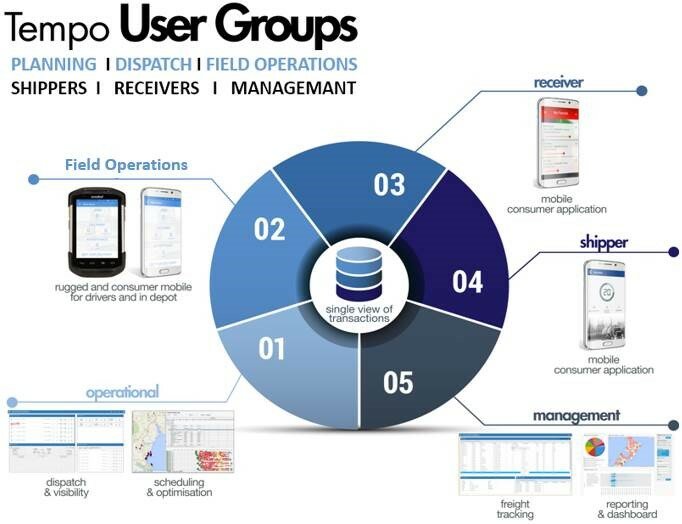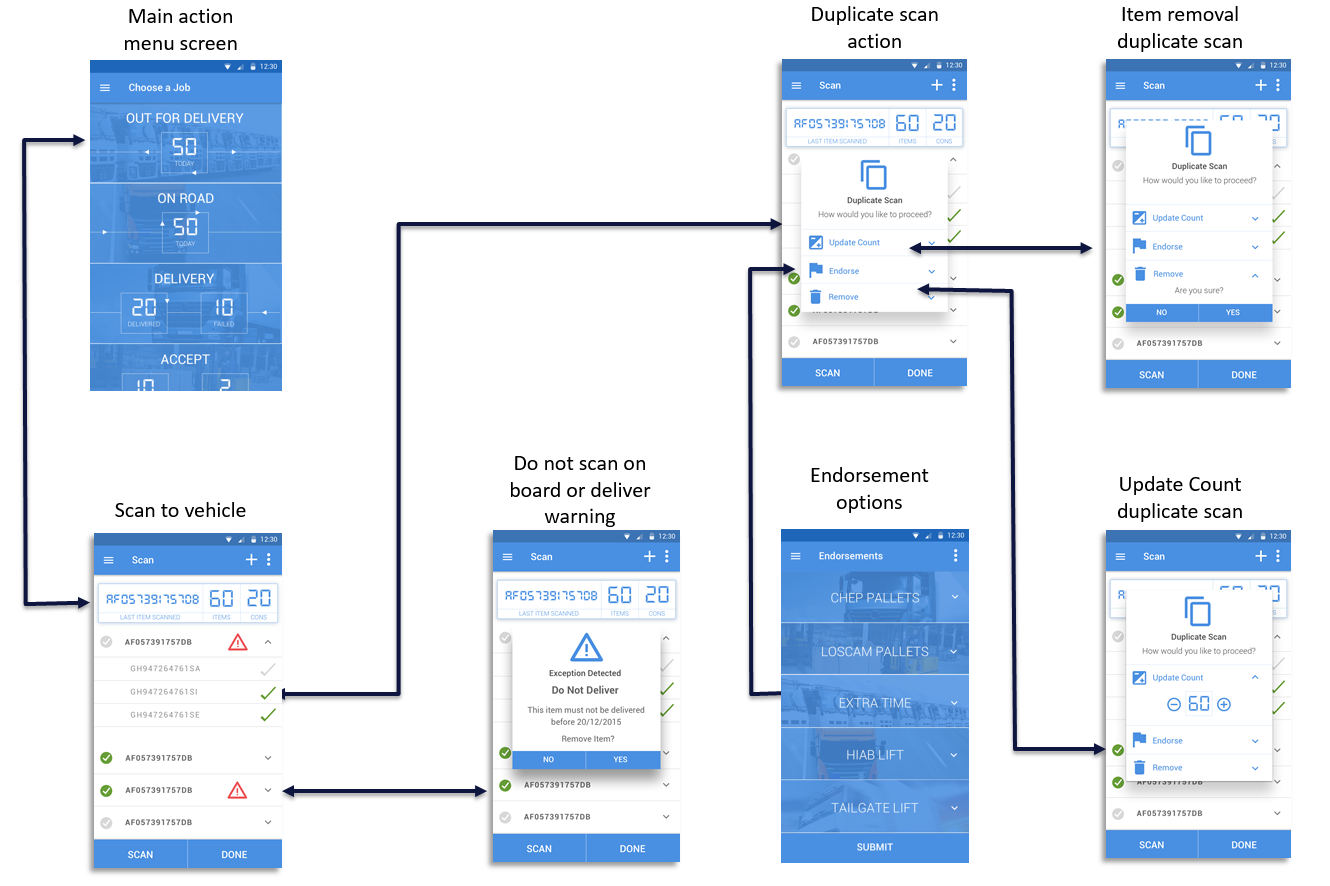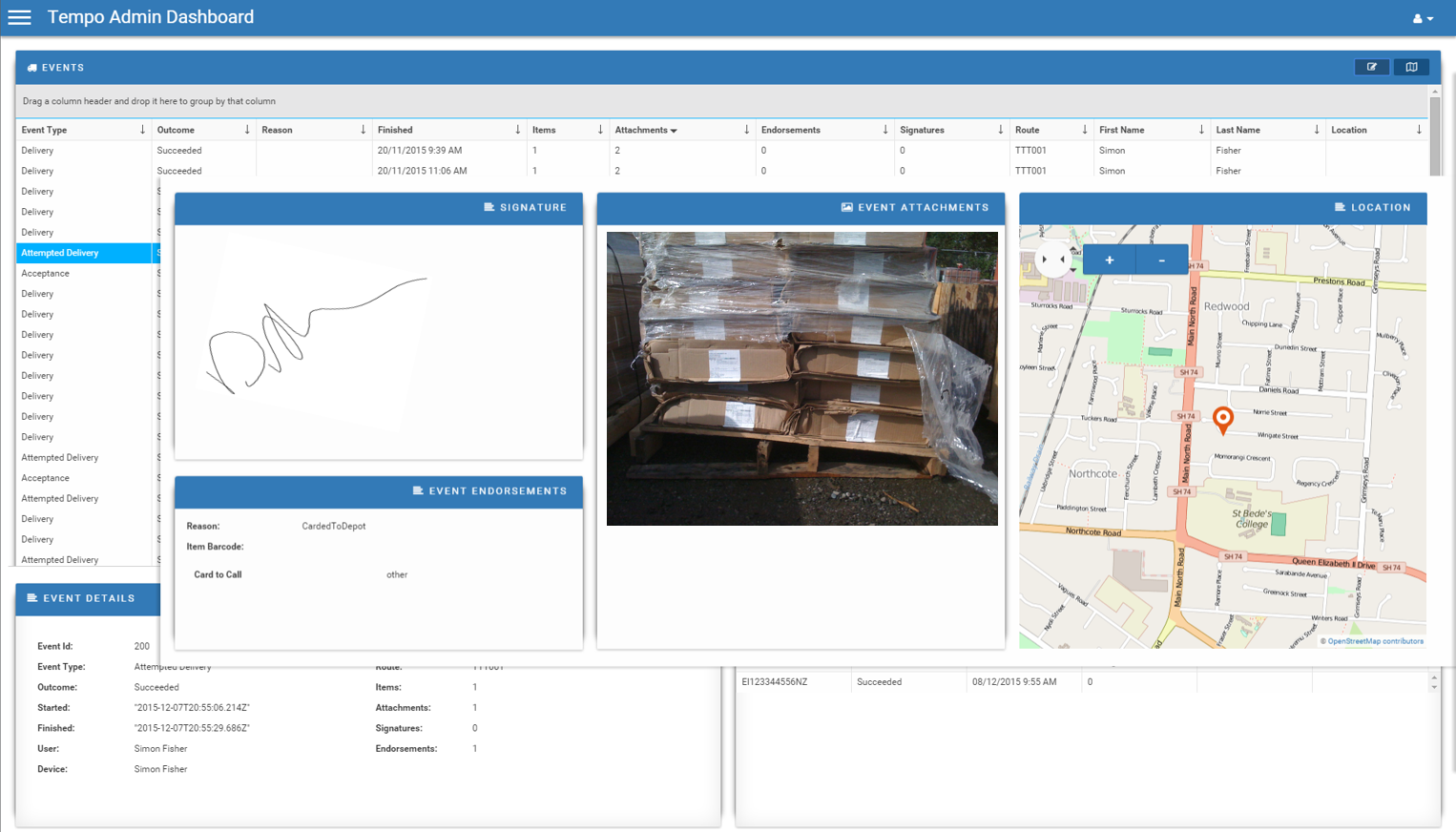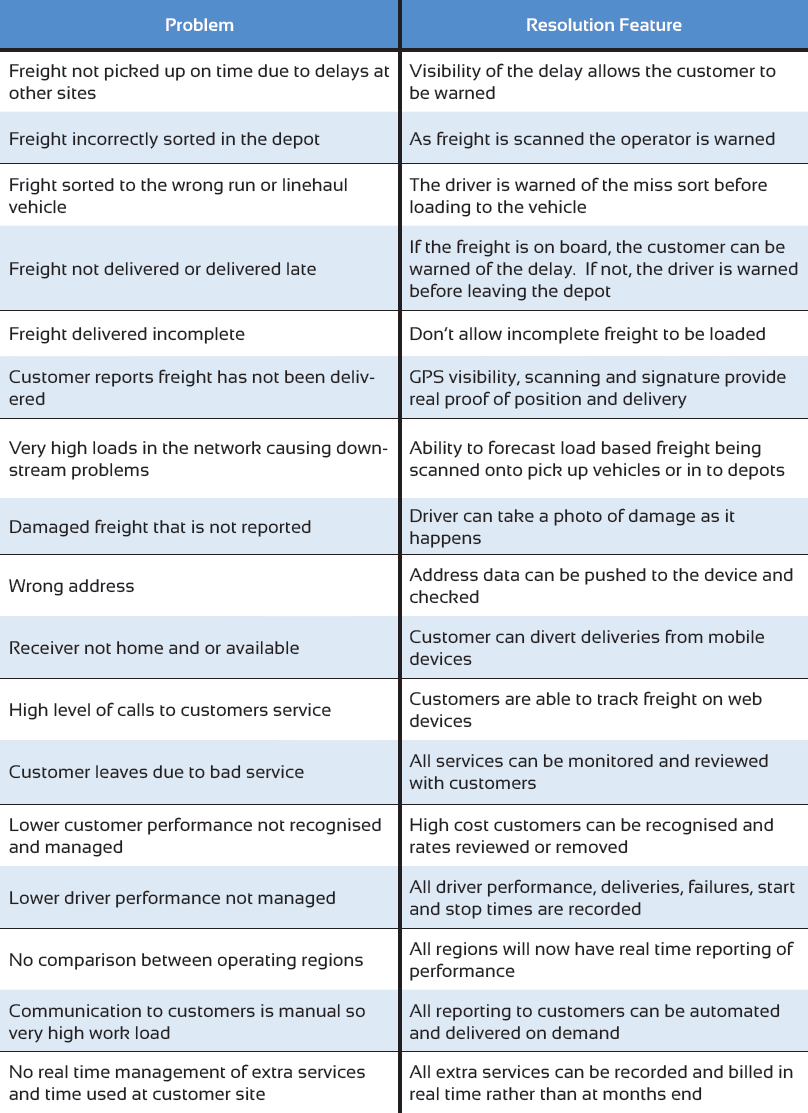Tempo by Datacom delivers real time visibility of events across the Transport and Logistics networks using mobile computing, scanning, and process management capability. This information can then be used to inform shippers, receivers and carrier management of desired and undesirable freight events and pin point processes that can be improved.
The Tempo product facilitates the introduction of new services that can be offered to your customers to help win new business.
Network and processes
The diagram below gives a high level view of a network. Across a national network, depending on the services provided, a carrier will scan freight between 3 and 10 times, to give a clear view of the location and state of the freight. The key is to have just enough scan point so you can track the freight without adding cost.
.jpg.aspx;;)
Typical Configuration
Within a typical Transport and Logistics Network, Tempo is used for process control and event tracking at the following  points:
points:
- Bulk delivery by the shipper direct to your depot
- Pick up at the shipper by the carrier
- Inbound scanning at the depot so freight can be sorted to runs, both local and remote (Line Haul).
- Out for delivery (OFD) has many different names depending on the carrier (scan to van, on for delivery). This process moves the freight from the depot to the driver’s vehicle for delivery.
- Load to line haul. This process takes all the freight that is not for delivery in that city and sorts it to freighters. Freight can be consigned to one or many drop locations.
- Delivery to a commercial customer (B to B). This is still the bulk of deliveries in the transport and logistics operation. A driver can deliver from one small item to a full truck load with hundreds of items to the one location.
- Delivery to consumers (B to C). This is a major growth part of the market but is also low profit if not managed very carefully. First time delivery rates can be as low as 70%.
- Delivery to other carriers who will deliver in their regions (typically not major centres).
Tempo Applications
Tempo is designed to support different business types, including parcel, general freight LTL, container and FTL. Each customer application of Tempo is built quickly with a simple process of configuring the product to capture the events and event outcomes required. Datacom will implement your application by working with your team to map your requirements against Tempo features.
How are Exceptions handled?
Exceptions are managed across each of the processes within the network including:
- During Out For Delivery where OS&D (Over Shorts and Damaged) can be noted
- During Delivery where extra services, failures and damage can be recorded.
The above configuration of events and processes is a simple example configuration of Tempo.
Tempo Users
The diagram below splits Tempo into components used by each of the 3 main user types:
- Carrier Operational teams including the fleet, in depot and local management
- Carrier Management teams including customer facing, national operations, planning and administrations
- Customers – Both Shipper and Receivers want to track shipments and deliveries

Mobile applications users
An example below shows a typical OFD process.
This process shows moving from the menu screen to the OFD process screen. Once in this screen items can be scanned to the driver vehicle. If scanned once the item will be shown as on board. If scanned a second time the item can the item can be endorsed, removed or the count updated. This process is driven by a configurable menu.

Management & operations
Tempo includes an Operations Management Web Application that can be used by your operations team for the following purposes:
- Create Jobs
- Dispatch Jobs to Routes / Drivers
- Track Freight
- Monitor Events
- Perform Operational Reporting (e.g. Driver Load, SLA Alarms)
- System Administration (e.g. Add / Remove users, routes, locations, barcode masks, service codes and other reference data)
For Tempo Customers that have an existing Freight Management System (FMS) or Transport Management System (TMS), Tempo includes a 3rd Party API that is used to create connectors between these external systems and Tempo. The Tempo API includes the following key features for 3rd Party connectors:

Customer Applications
With the Tempo system in use capturing more events is available to operations and management. Once understood this information can be very effectively made available to both shipper and receivers. These two customer types will have very different needs for the freight information that can be provided.
Shippers need to know about bulk outbound freight and where this freight is in the network. They also need instant access to this information so they are able to answer customer queries quickly and accurately.
Tempo has a shipper freight tracking module that gives:
- Single consignment tracking
- Multi consignment tracking based on profile
- Current location of all freight
- Delivered POD signature and name
- Time of all events
- Load information
Residential Receivers need to know where specific freight is so they can arrange to be at that location or organise an authority to leave or alternate delivery location. The application can be used to track a single item or sign in and join up to get extra function. When the consumer sign up they provide you (the carrier) with address information, phone details and email addresses. This then allows the carrier to communicate directly with the receiver. If the ASN data from the shipper has the receiver email the carrier can advise the receiver of critical points in the parcels (freight) path including, picked up, out for delivery, about to be delivered and delivered or failed. This then significantly lowers the first time failure rate and cost of doing business with B to C shippers.
The consumer receiver application provides the following capability:
- Tracking of parcels
- Updating of delivery points during flight
- Change of address and email details
- GPS location of the receiver
- Alternate delivery points
- Electronic ATLs
Problems and Resolutions
The following table looks at the typical problems in a Transport and Logistics Business and how these can be addressed using tracking and visibility technology from Datacom.

Benefits of real time track event management
As with any business, benefits must produce net increase in profit through lower costs of operation or new services delivered to new or existing customers. Most businesses will look at the operational efficiency first as doing new and clever things for customers will add significant cost if the network is not efficient.
The starting point has to be real time visibility of all activity in the network. The bonus being that installing a track event management system give tracking services to customer and visibility of the whole business. This allows the team to start to improve the business while with the help of customers who now have accurate data to work with.
- Real time visibility of the fleet and depots show up major failure points
- Lower cost of failure in delivery, damage by stopping the failure or correcting quickly
- Far shorter problem resolution though customers service
- Customer performance management (getting rid of bad customers)